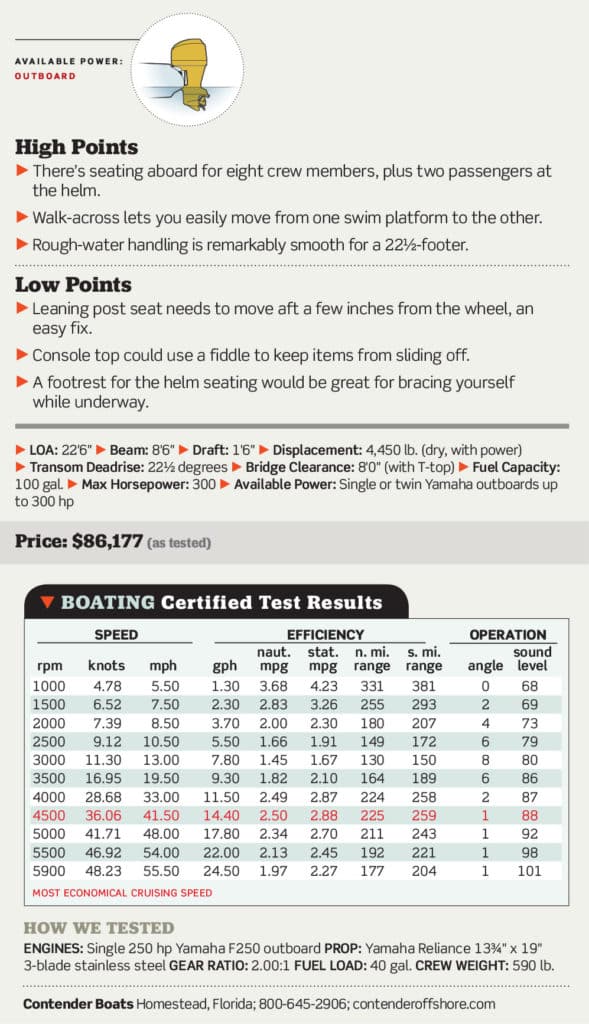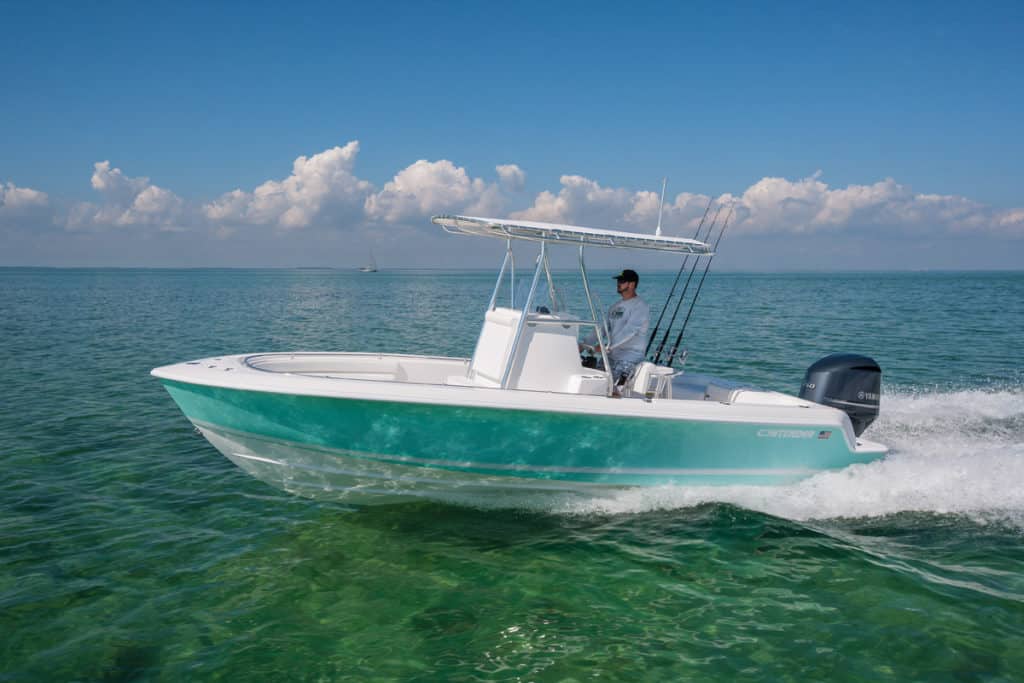
Beam: 8’6″
Draft: 1’6″
Displacement: 4,450 lb. (dry, with power)
Transom Deadrise: 22½ degrees
Bridge Clearance: 8’0″ (with T-top)
Fuel Capacity: 100 gal.
Max Horsepower: 300
Available Power: Single or twin Yamaha outboards up to 300 hp
More Information: contenderoffshore.com
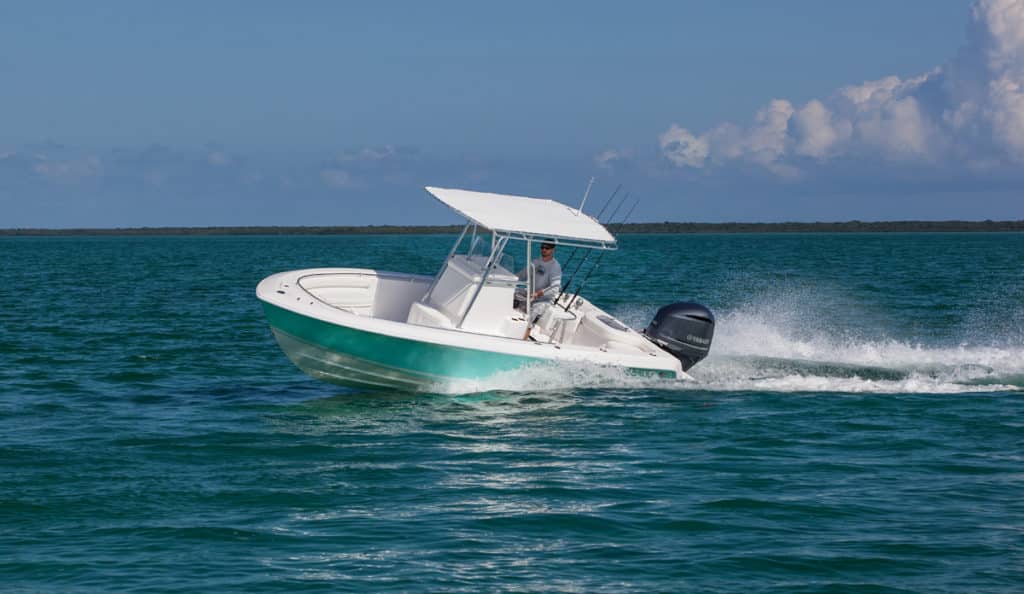
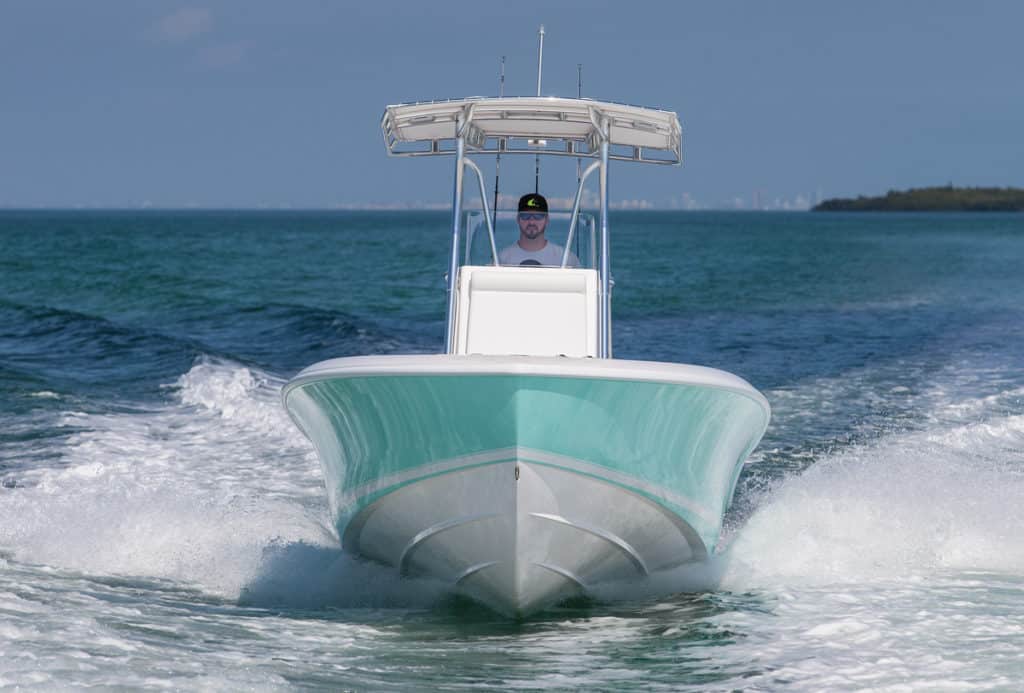
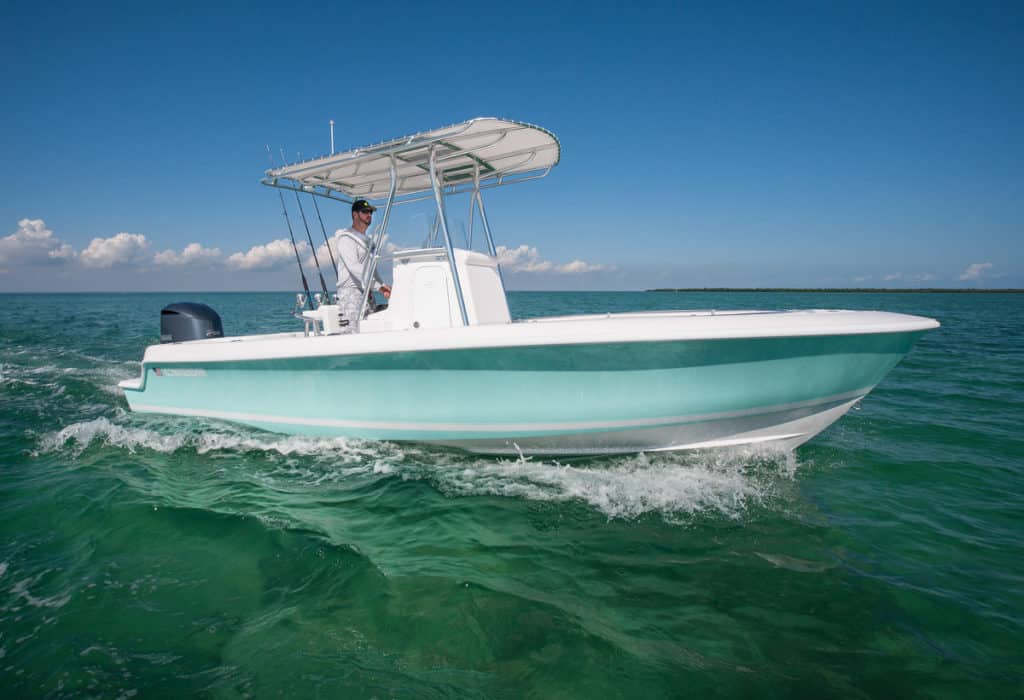
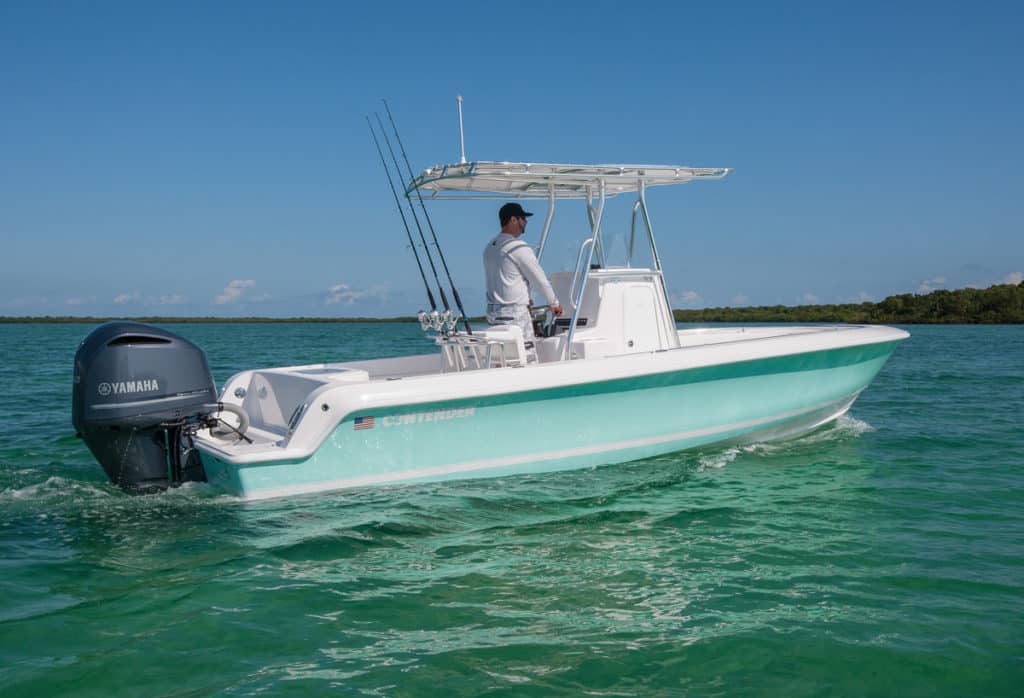
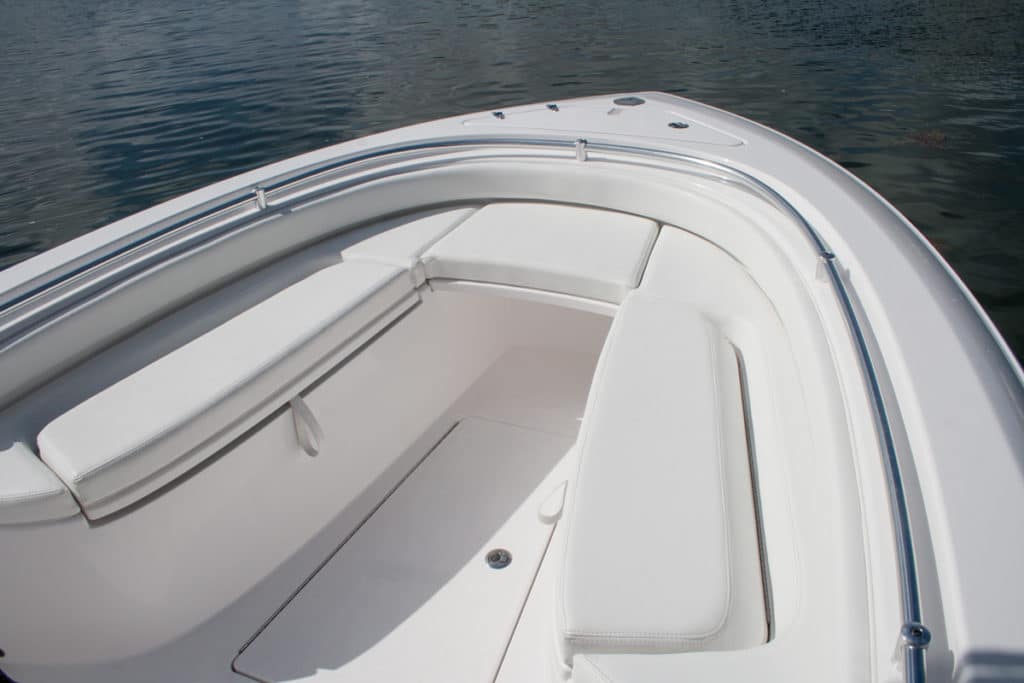
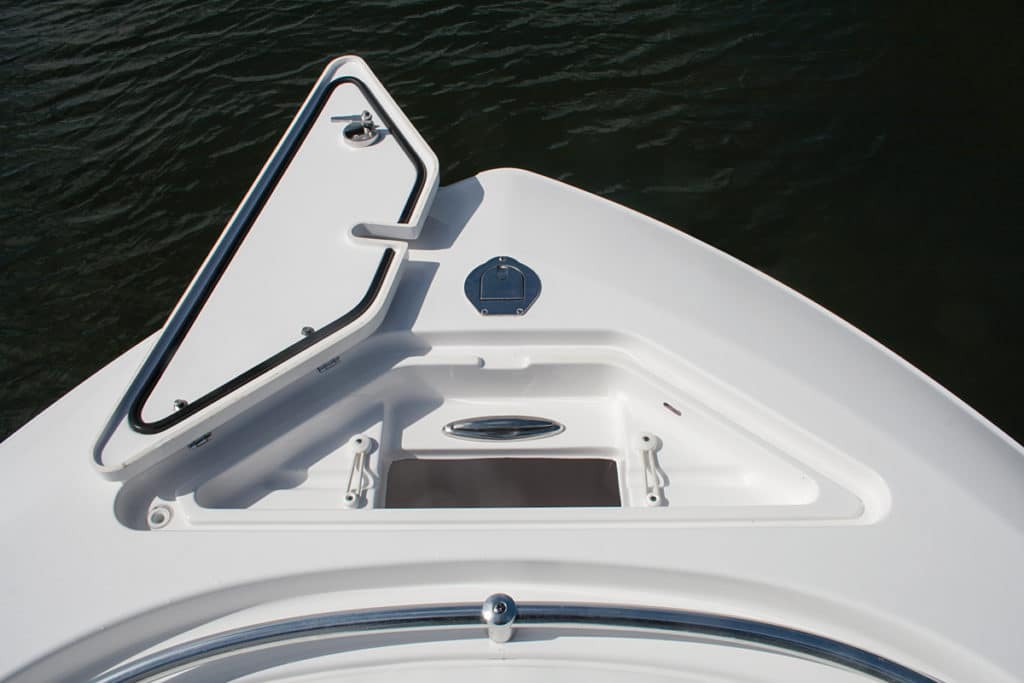
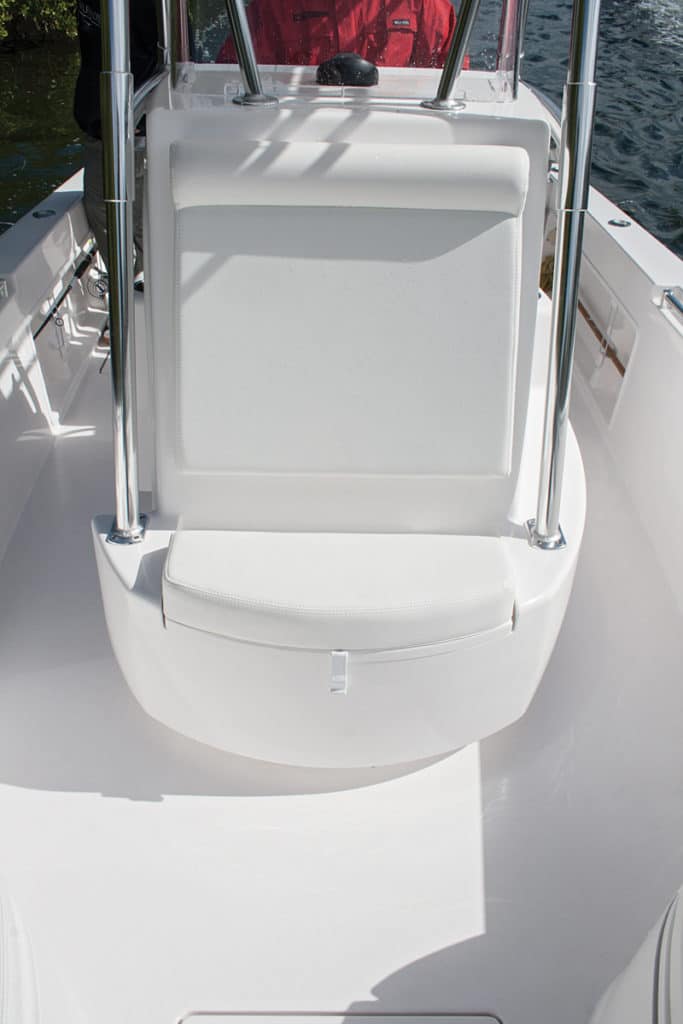
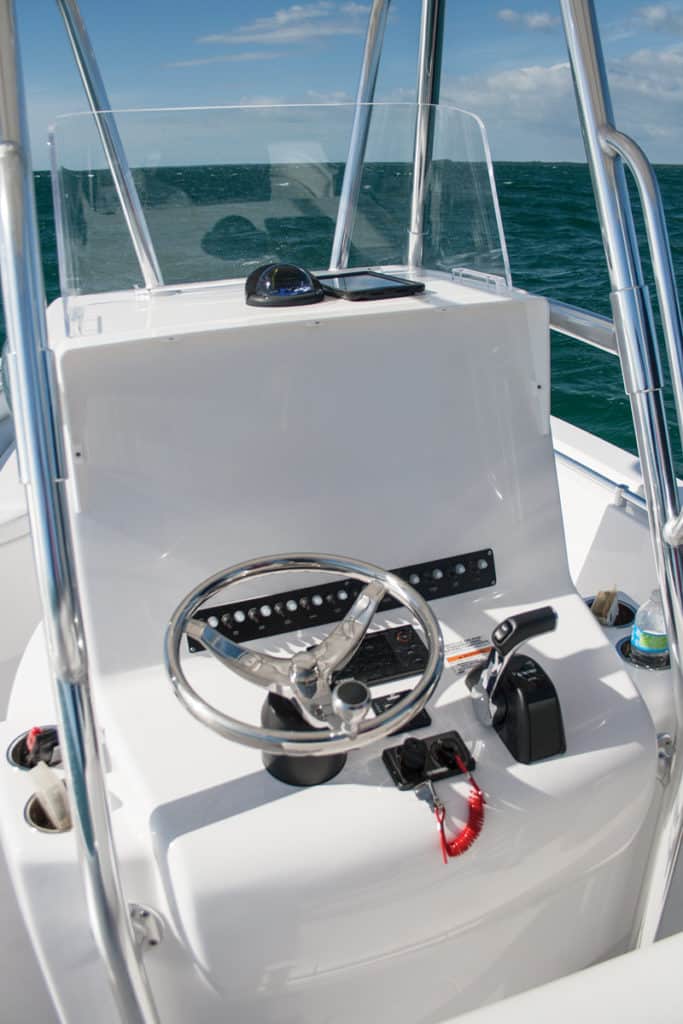
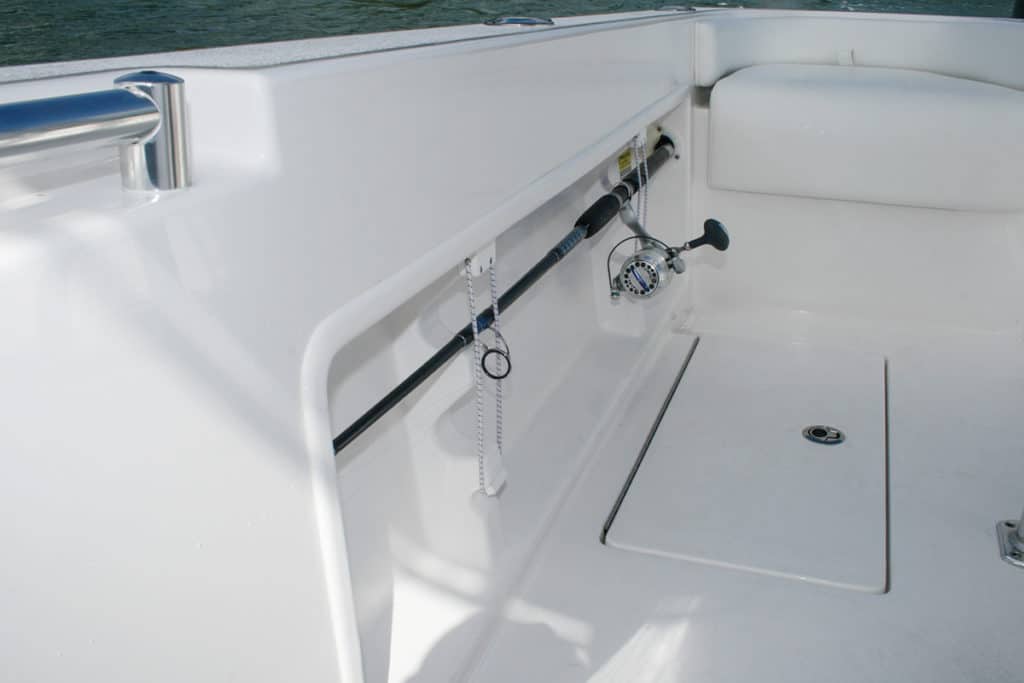
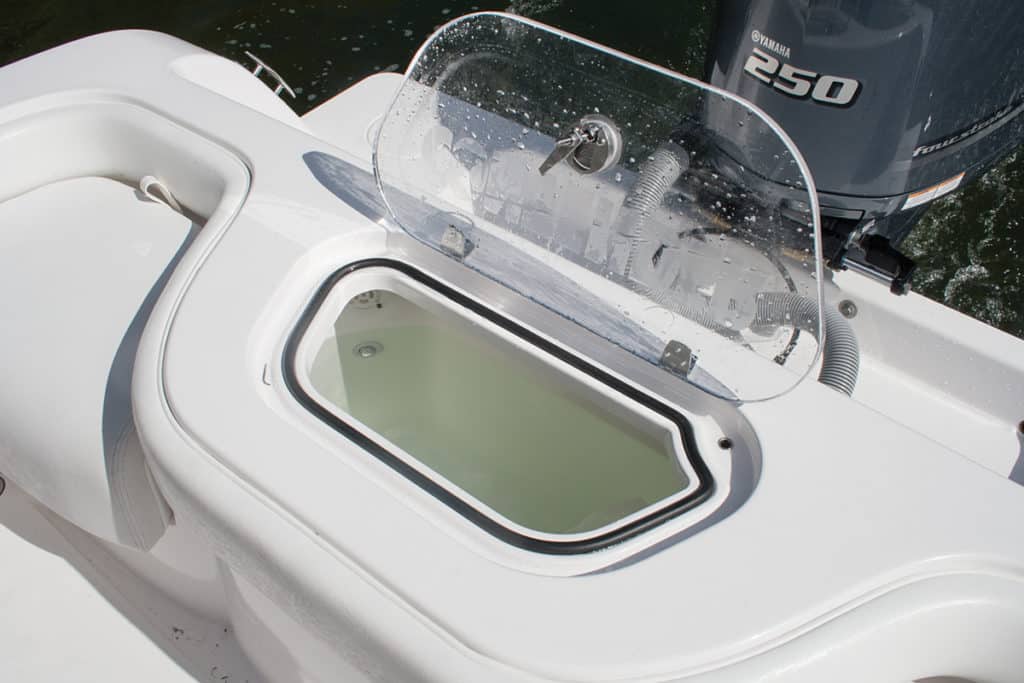
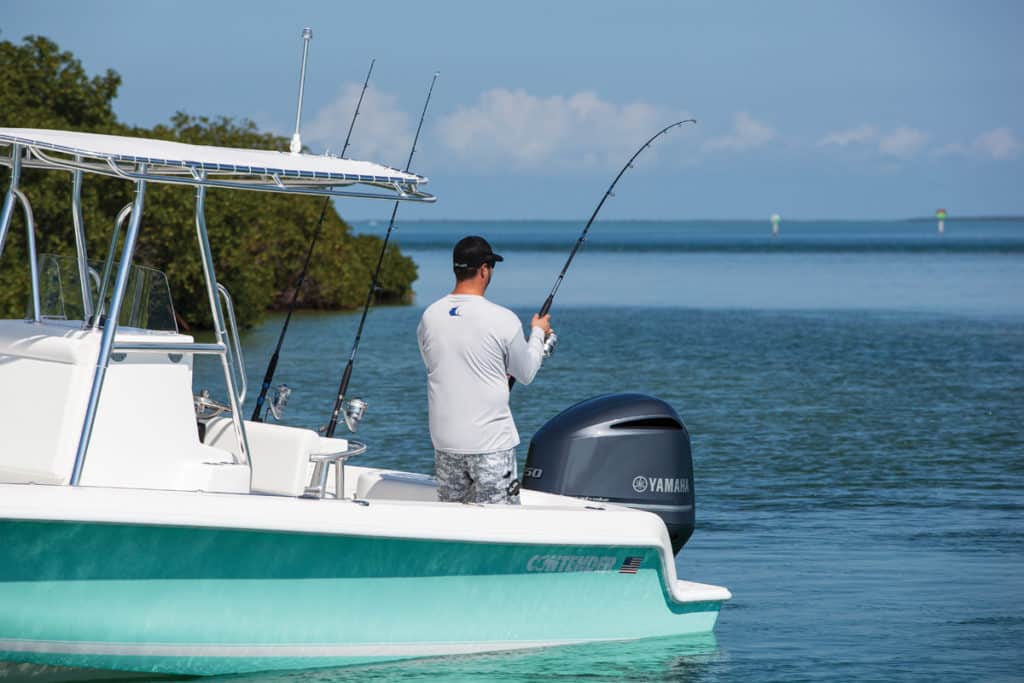
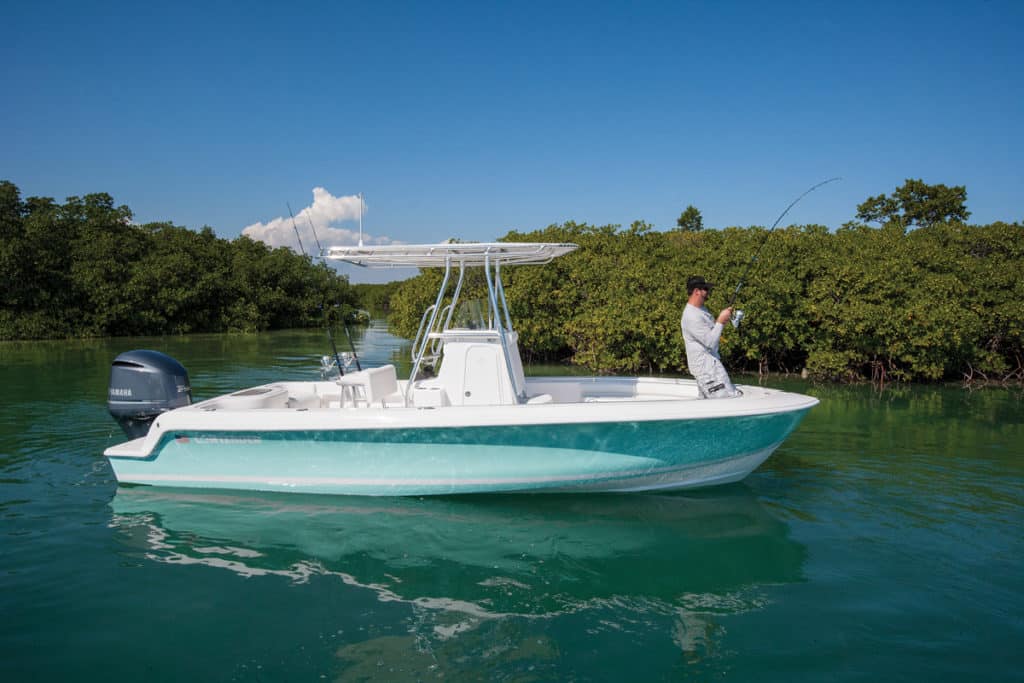
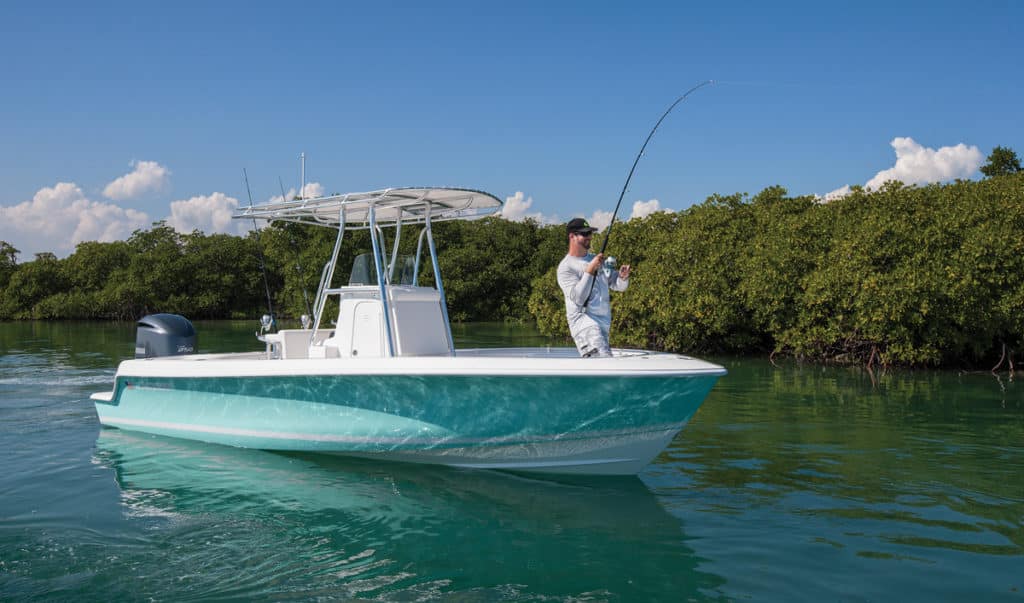
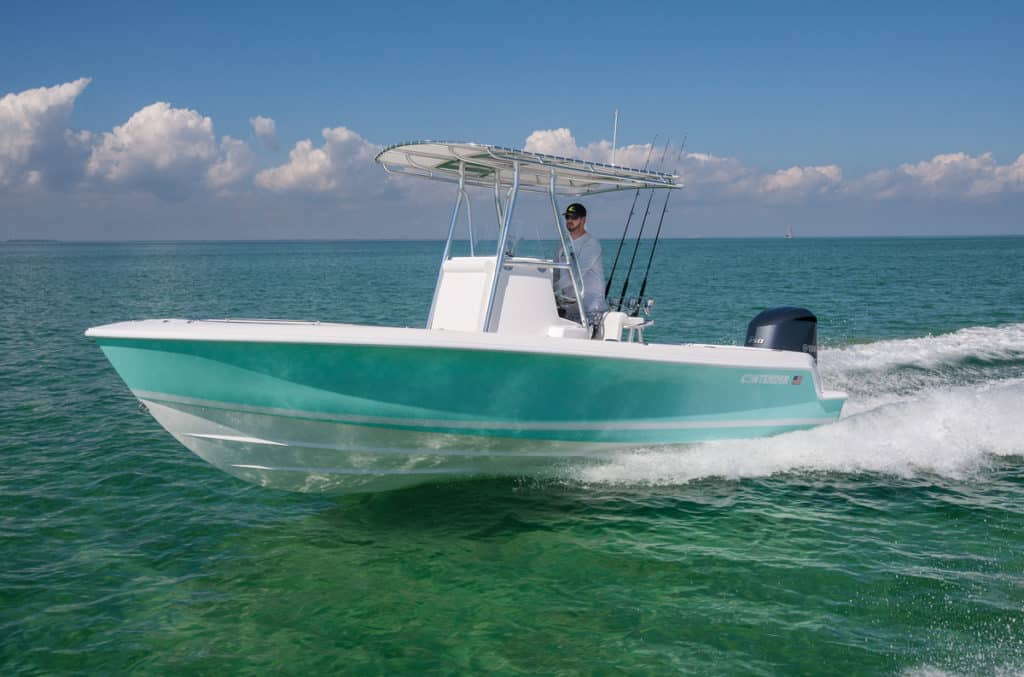
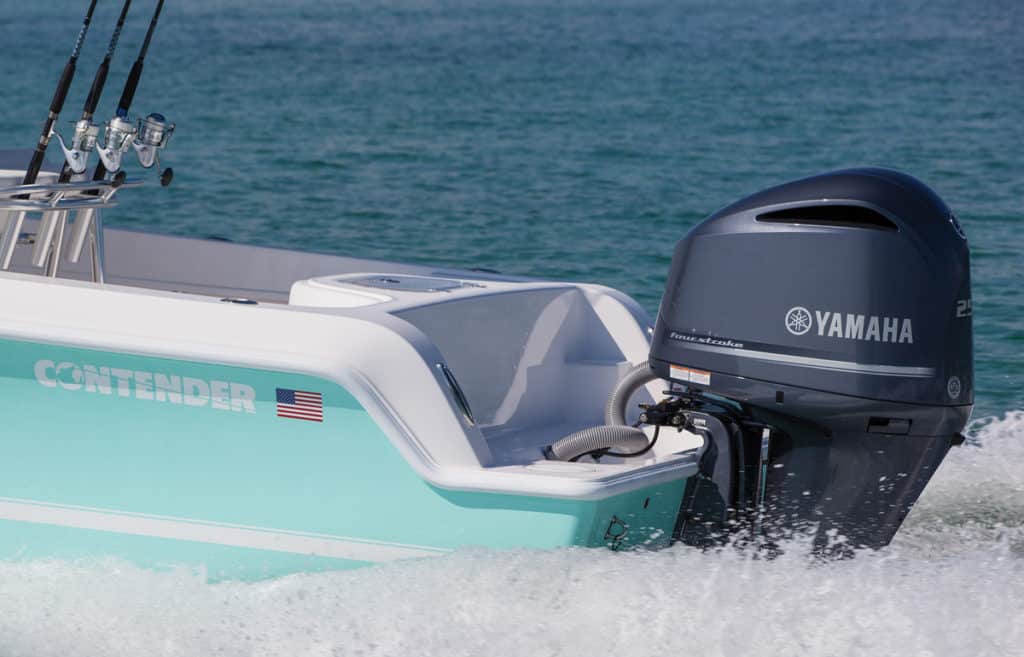
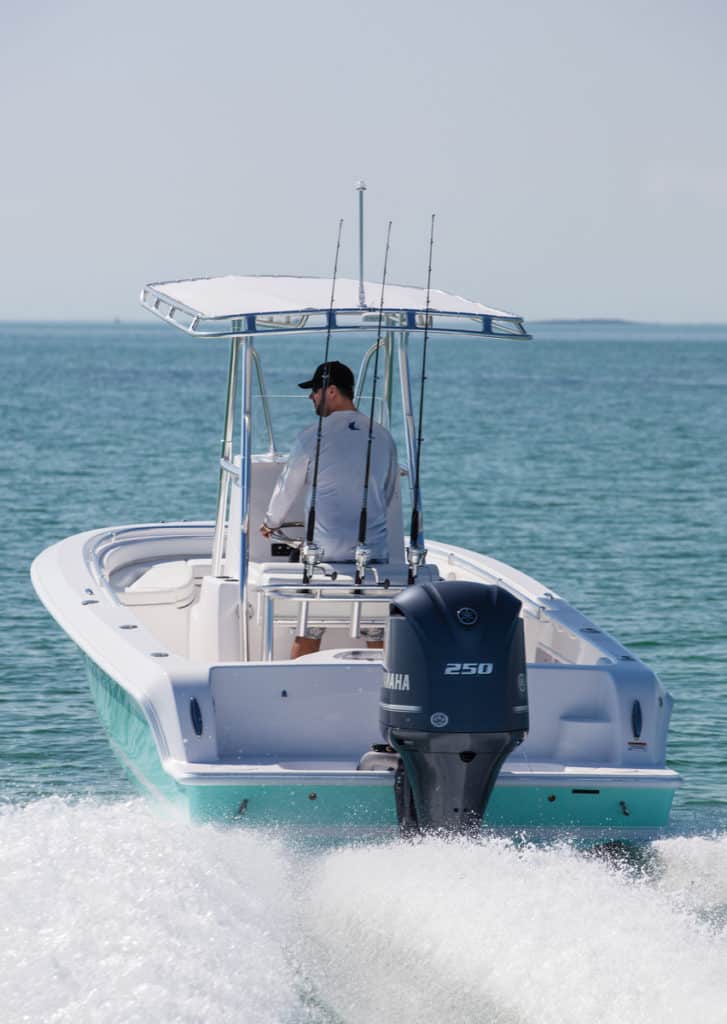
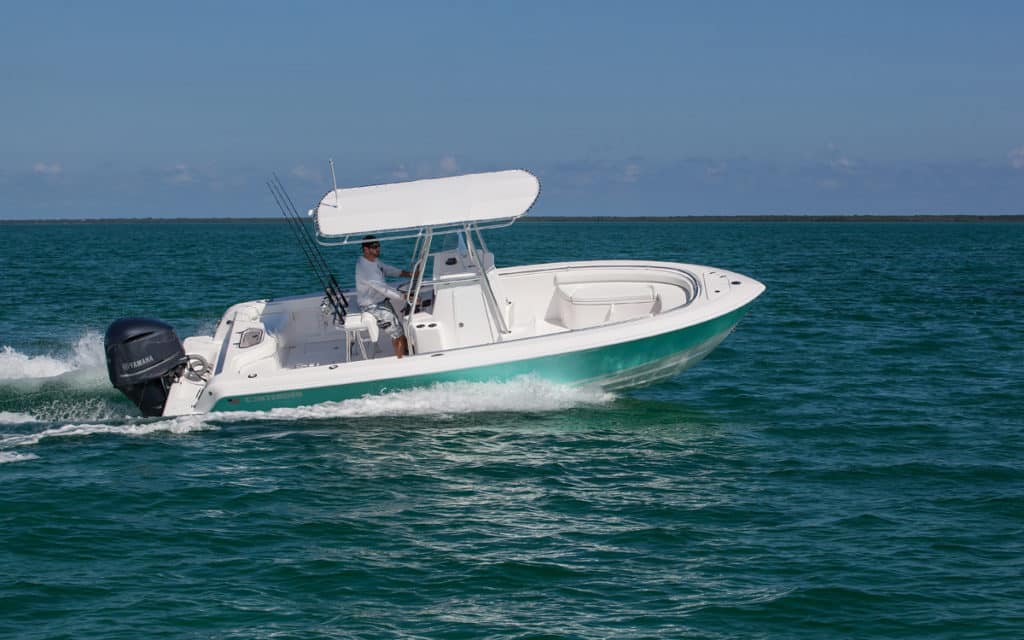
Contender designed the new 22 Sport for first-time boat buyers. “This boat is a starter boat for those in their mid-20s to 30s,” said Jordan DeLong, project manager for Contender. “It’s for someone who has always wanted a Contender but couldn’t quite swing it financially before this.”
The smallest model in Contender’s current lineup, the 22 Sport accommodates the family with seating that includes a pair in the stern quarters, one on the front of the center-console, and two elevated pods with snap-on upholstery and a filler cushion forward that creates U-shaped seating in the bow. Padded coaming bolsters wrap around the bow and transom areas to serve as backrests.
Accessible via a door on the starboard side, the console interior offers 5 feet 4 inches of headroom for changing into a swimsuit. There’s space for a portable marine toilet, or you can order an optional permanent marine head.
A pair of integral swim platforms — one on either side of the splashwell — with a walkway between just abaft the transom bulkhead accommodates families who like to swim and dive. A pullout swim ladder on the starboard side lets you easily climb back aboard.
This Contender reflects the brand’s sport-fishing DNA with a 26-gallon pressurized transom livewell, a 94-gallon fish locker under the foredeck, and two 30-gallon fish boxes flanking the aft cockpit sole.
A central hatch in the aft cockpit offers access to the bilge rigging, with the batteries under the seats in each stern quarter. You’ll also find a 95-gallon dry-storage compartment under each elevated forward seating pod. All hatches are gasketed and guttered to channel away water, and deck hatches feature compression latches.
An anodized-aluminum grab rail wraps from amidships around the bow to enhance safety, but it is recessed and unobtrusive. The stainless-steel bow fixture for the red/green running lights folds flat during daylight hours. All cleats push down when not needed. Two gunwale rod holders on each side of the boat are ideal for trolling.
Stow your rods in a four-rod vertical rack along the port side of the pod-style center-console and in a three-rod rack on the backside of the leaning post. A Frigid Rigid cooler secures underneath. We found the leaning post seat was installed a tad too close to the wheel. Larger crew might find the spacing a bit cramped here.
Nineteen-inch walkways beside the console allow you to easily fight a fish down the rail. Our boat was equipped with a canvas T-top and an anodized-aluminum frame, which provided a great place to hold on while underway.
There’s ample room for three anglers to fish across the stern. The grit-style nonskid provides great traction. With a self-bailing deck, the boat can quickly drain any green water. Gunwales are 24 inches high in the aft cockpit, rising to 26 inches tall in the bow. Our tester featured both freshwater and raw-water washdown systems with slinky-style hoses and contoured holders for each.
Our tester lacked electronics, but the 31-inch-wide helm panel will easily accommodate a 16-inch multifunction display. A special visor atop the panel helps reduce glare on the helm panel.
The anchor locker on the 22 Sport offers copious room for line and a pipe to contain the shank of the anchor. There’s an integral bracket on the inner rim of the locker in which the crossbars of a Danforth-style anchor can nest. A pull-up cleat under the hatch provides a convenient and tidy way to tie off the anchor line.
Powered by a Yamaha F250 outboard with digital throttle and shift, the 22 Sport is a spirited performer. With 40 gallons of fuel on board and turning a 13¾-by-19-inch Yamaha Reliance three-blade stainless-steel propeller, the Contender jumped on plane in 4.2 seconds and accelerated to 30 mph in eight seconds.
We recorded a top speed of 55.5 mph at 5,900 rpm, while the Yamaha F250 burned 24.5 gallons per hour according to the Yamaha Command Link Plus gauge. Most economical cruising speed came at 4,500 rpm and 41.5 mph while the F250 sipped just 14.4 gallons per hour for 2.88 mpg.
With 22.5 degrees of deadrise at the transom, the hull knifed smoothly through waves, which were running up to 3 feet in the waters outside Florida’s Key Largo on test day. Uflex hydraulic steering eased the task of maneuvering through the numerous crab-pot buoys. The hull’s response to steering input was quick and predictable at all speeds.
Looking for a comparison model? Robalo’s R222 ($58,697 comparably equipped and with a Yamaha F250) is 1 foot shorter and has 11 gallons less livewell capacity, but seats more crew across the stern and has a transom door.
At a time when center-console boats seem to be getting bigger every year, it’s good to see that builders such as Contender refuse to neglect the smaller end of the spectrum, especially with a model that’s relatively swift, can tackle rough water and is also fuel efficient.
Comparable Model: Robalo R222
